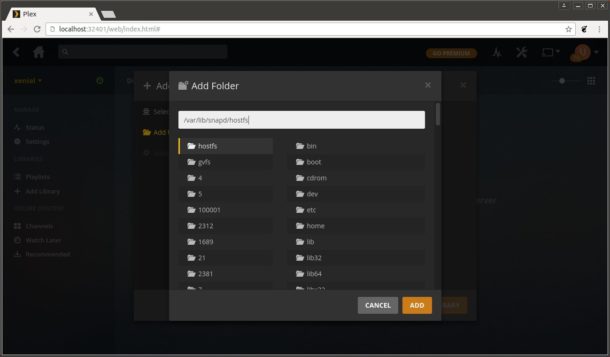

- #Plex media server won t open how to
- #Plex media server won t open install
- #Plex media server won t open update
- #Plex media server won t open upgrade

Sep 22 13:40:48 raspberrypi systemd: Failed to start Plex Media Server for Linux. Sep 22 13:40:48 raspberrypi systemd: rvice start request repeated to…rt. Sep 22 13:40:48 raspberrypi systemd: Starting Plex Media Server for Linux… Sep 22 13:40:48 raspberrypi systemd: Stopping Plex Media Server for Linux… Sep 22 13:40:48 raspberrypi systemd: rvice holdoff time over, schedu…rt. Loaded: loaded (/lib/systemd/system/rvice enabled)ĭrop-In: /etc/systemd/system/Īctive: failed (Result: start-limit) since Fri 13:40:48 UTC 2min 53s ago I am having the same issue, here is the output when I check the service $ sudo service plexmediaserver status -l If you haven’t used the web app to claim and populate your server, you will be given the chance to claim it after your app spots it. Open the Plex app from a client device on the same network, and Plex will detect your server for you. Step 10: Connect to your server from client devices Plex will briefly show you how things work and will then give you the option to “add library.” Go ahead: select the right type of media, navigate to your files, and select the folders you want to add. Then, open your browser and type your IP address followed by :32400/web/ Let’s start populating that server.įirst, make sure you’ve got your files attached to your Pi somehow – like through a USB external hard drive, for instance.
#Plex media server won t open how to
Now we’ve showed you how to set up a Raspberry Pi Plex server – but we haven’t showed you how to put anything on it.

You can do this right from the command line with sudo reboot. Save and exit the file (CTRL+X, then Y, then Enter). sudo nano /boot/cmdline.txtĪt the bottom of the command line text file, type ip= followed by your IP address. You’ll want your Raspberry Pi Plex server to have a static IP address, so that you only have to connect once on each client device. Then, in the terminal, type: sudo service plexmediaserver restart Step 7: IP address chores Type Y for “yes” to save your changes and hit Enter to stick with the same old file name. Delete “plex” and type in “pi,” so that the line reads PLEX_MEDIA_SERVER_USER=pi. Look for the line that says PLEX_MEDIA_SERVER_USER=plex. Your terminal window will fill with a big text document. sudo nano /etc/default/plexmediaserver.prev You’ll have to hit “y” when prompted to approve the download.
#Plex media server won t open install
Yep, we’re finally at this stage! sudo apt-get install -t jessie plexmediaserver
#Plex media server won t open update
sudo apt-get update Step 5: Download Plex echo "deb jessie main" | sudo tee /etc/apt//pms.listįinally, update the package list. Next, we’ll add dev2day’s repository to the package source list. First, we need a crypt O key for the dev2day website. We need the dev2day repository because it contains Plex. Step 4: Add the dev2day repository to your package source list Either way, you’re now ready for the next step.

If you already have it, you’ll just get a message kicked back telling you so. Stay in the command line and type: sudo apt-get install apt-transport-https It should be automatically installed on Raspbian, but that isn’t true for some older versions. We’re going to use the HTTPS transport package in this process.
#Plex media server won t open upgrade
Open the command line (it’s the black and blue box on the taskbar) and type: sudo apt-get update sudo apt-get upgrade Step 3: Check that you have the HTTPS transport package installed Let’s make sure we have the latest and greatest version of Raspbian. You can install it using NOOBS, which is probably the easiest option. We’re going to run our Plex server on the Raspbian operating system. Your Raspberry Pi Plex server will make it all available to all of your client devices, so the more you have, the better! Step 1: Install Raspbian And this project is much more worthwhile if you also have a USB drive or external hard drive to store lots of shows, movies, and music on. You’ll also want a keyboard, mouse, and monitor, of course. How to set up a Raspberry Pi Plex server What you’ll needĪs always with these projects, you’ll need a Raspberry Pi (we recommend the Raspberry Pi 3) and a microSD card (at least 8 GB). That has changed, though, and we’re here to show you how to set up a Raspberry Pi Plex server. Until recently, though, it wasn’t possible to set up the server-side app on the Raspberry Pi. Raspberry Pi fans have been putting the client-side Plex app on Raspberry Pis for years. Plex is one of the most popular media center and media server apps available.


 0 kommentar(er)
0 kommentar(er)
